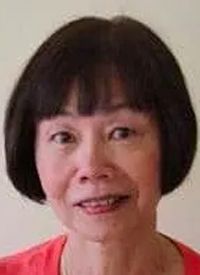KCd Consolidation Does Not Show Noninferiority to ASCT in Transplant-Eligible, Newly Diagnosed Myeloma
The 2-year progression free survival achieved with carfilzomib, cyclophosphamide, and dexamethasone consolidation did not prove to be noninferior to up-front autologous stem cell transplantation in newly diagnosed, transplant-eligible patients with multiple myeloma, although the margin is small.
Kwee Yong, MBBS, PhD

The 2-year progression free survival achieved with carfilzomib (Kyprolis), cyclophosphamide, and dexamethasone (KCd) consolidation did not prove to be noninferior to up-front autologous stem cell transplantation (ASCT) in newly diagnosed, transplant-eligible patients (NDTE) with multiple myeloma, although the margin is small, according to results from the CARDAMON study (NCT02315716) presented during the 2021 ASCO Annual Meeting.
Data currently support the use of ASCT in these patients; however, those trials have employed lenalidomide as maintenance therapy. The concern is that lenalidomide has been shown to mostly benefit patients with standard-risk disease. Moreover, ASCT among this patient population is associated with high MRD rates following induction and consolidation strategies.
As a result, researchers aimed to assess the effect of carfilzomib-based induction and maintenance treatments versus ASCT in this patient population.
Patients at pre-randomization received 4 cycles of 56 mg/m2 of carfilzomib in a bi-weekly regimen along with 500 mg of cyclophosphamide and 40 mg of dexamethasone weekly. Patients who achieved at least a partial response to therapy proceeded to peripheral blood stem cell harvests (PBSCH) and were then randomized 1:1 to melphalan 200 mg/m2 plus ASCT or 4 cycles of KCd consolidation. The study population then received 18 cycles of maintenance carfilzomib at 56 mg/m2 weekly.
Prior results of the CARDAMON trial evaluating very good partial response (VGPR) to therapy were previously. Here, the study’s lead author Kwee Yong, MBBS, PhD, of University College London Hospitals NHS Foundation Trust, presented results from the second co-primary endpoint of PFS.
The trial enrolled 281 patients (median age, 59 years), of which 47.3% were aged older than 60 years. All patients received KCd induction and were then randomized. At the time of randomization, outcomes were similar between the ASCT (n =109) and KCd consolidation (n = 109) arms.
Two hundred and twenty-eight patients proceeded to PBSCH, and 197 patients started maintenance therapy. Following induction treatment, VGPR rate was 58.5%, which increased to 77.3% after consolidation and 80% after ASCT. The MRD-negative rate after induction was 24.3%, which increased to 35.8% after consolidation and 53.1% after ASCT.
Among patients considered standard risk, VGPR rate after KCd induction (n = 207) was 58.5%, which increased to 79.5% with consolidation KCd (n = 79) and 76.8% with ASCT (n = 85). The MRD-negative rate was 25% after induction, 37.1% with consolidation and 48.1% with ASCT. The results, Yong noted, were relatively similar in the high-risk patient population. In those individuals, VGPR rate after induction (n = 52) was 59.6%, 77.3% after consolidation (n = 22) and 89.5% after ASCT (n = 19). MRD-negative rate was 24% after induction, 31.6% with consolidation and 66.7% after ASCT.
“This difference in MRD-negative rate looks striking,” Yong said. “But I would draw your attention to the relatively small patient numbers in these groups.”
As for survival outcomes, Yong noted that KCd was not non-inferior to ASCT. At a median follow-up of 37.5 months, 2-year PFS rate in the ASCT arm was 76% (95% CI, 66-83) compared with 70% (95% CI, 60-78) in the KCd consolidation arm. Patients in the ASCT arm have not yet reached a median PFS, whereas the median PFS in the consolidation group is 3.4 years (95% CI, 2.4-N/A).
In terms of genetic risks, patients with standard-risk genetics achieved a median PFS of 5.1 years while the high-risk patients achieved a median PFS of 1.7 years (HR = 2.7, 1.8-4.1; P < .001). Moreover, the median PFS in the ASCT arm was 4.7 years (95% CI, 3.3-N/A) compared to 1.2 years in the consolidation arm (95% CI, 0.7-N/A) among high-risk patients.
“However, this does not reach significance,” Yong explained. “And because of the high confidence intervals in neither high-risk [nor] standard-risk group, it does appear that ASCT has a benefit over consolidation.”
Following randomization, patients who were MRD-negative following PBSCH had similar PFS rates in the ASCT and consolidation arms (HR = 0.8, 0.3-2.0; P = .7).
In summary, Yong noted that induction with K56Cd produced deep responses in patients with a 24.3% MRD-negative rate. Additionally, VGPR rates were similar between the ASCT and KCd consolidation arms. However, MRD-negative rate was higher following ASCT (53%) than KCd consolidation (35.8%).
“High risk patients have inferior PFS compared to standard risk patients but in neither of these genetic risk groups is there evidence that ASCT is more effective than KCd consolidation,” she concluded. “Patients who are MRD-positive at randomization may derive more benefit from ASCT than from consolidation.”
Reference
Yong K, Camilleri M, Wilson W, et al. Upfront autologous stem cell transplantation (ASCT) versus carfilzomib-cyclophosphamide-dexamethasone (KCd) consolidation with K maintenance in transplant-eligible, newly diagnosed (NDTE) multiple myeloma (MM). J Clin Oncol. 2021;39(suppl 15):8000. doi: 10.1200/JCO.2021.39.15_suppl.8000



